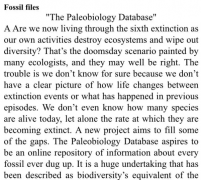青岛朗阁:2016年1月30日雅思阅读考试真题回顾及解析
来源:青岛朗阁
浏览:
发布日期:2016-02-01 12:01
摘要:2016年1月30日的雅思阅读考试已经结束了,同学们发挥的怎么样那?青岛朗阁小编第一时间为大家带来了2016年1月30日的雅思阅读考试真题回顾及解析,希望对大家有所帮助~
青岛朗阁雅思阅读名师 李佩玟
| 考试日期: | 2016年1月30日 |
| Reading Passage 1 | |
| Title: | 澳大利亚的当初殖民地 |
| Question types: | 判断题6+ Short Answer简答 7 |
| 参考答案 |
判断题: 1. A great deal was known about Tench before arriving to Australia. FALSE 2. Tench drew pictures of what he saw during his journey. NOT GIVEN 3. generally treat convicts well FALSE 4. Tench’s opinion toward Aboriginals remained unchanged. FALSE 5. An aboriginals gave Tench food as a gift when they first met. NOT GIVEN 6. Tench held unusual opinion in his time. TRUE 简答题: 7. What concrete information proved Tench had a good education background? Diaries 8. What was used to control convicts Chains 9. Who told Tench to punish Aboriginals? Governor Phillip 10. What activity did they engage on their way to H River? Food hunting 11. Where did the escaped convicts intend to go? China 12. Where did Tench meet the first aboriginal? Botany Bay |
| 题型难度分析 | 本篇阅读题型为判断题和短问题简答题,都是细节题目顺序做题,难度适中。 |
| 题型技巧分析 |
简答题Short answer题型要求根据文章回答相应问题,通常以what、which、when、where、who、why、how等提问,往往顺序出题,与填空题做题思路相近。 解题步骤:1. 仔细看题目要求,如no more than two/three words 2. 确定问句种类并仔细理解问题:一般疑问句yes/no回答,选择疑问句或者wh/how问句具体回答 3. 关注问句中关键词key words,尤其是表示时间、地点、数量的词。4.对应关键词和文章内容,判断是否与原文含义一致,按要求找词回答问题。 |
| 剑桥雅思推荐原文练习 | C4T1P1/C6T1P1 |
| Reading Passage 2 | |
| Title: | Making images from space more accessible amateur |
| Question types: | 段落信息匹配4+人名匹配理论5+句子填空3 |
| 参考答案 |
14-17段落信息匹配题: 14. A particular method used to improve the image from Titan. C 15. What amateur astronomers often see E 16. The development of media used by amateur astronomer. G 17. The geographic highlights made by Lieken. C 18-23人名理论匹配: 18. Some experts don’t know how to utilize amateurs’ tools. Ed Flaspoehler 19. Amateur astronomers should be commended. Lebreton 20. Cooperation between professionals and amateurs would make people know how exciting the astronomy is. Robert Milkey 21. The amateurs outnumbered professionals. Ed Flaspoehler 22. The developed technology would help amateur astronomers do scientific jobs. Robert Milkey 23. Professionals have a better understanding of data than amateurs. Lieken 24-26 句子填空题 24. Amateur astronomers send the image through Cassini spacecraft. 25. Lieken’s group was aware that it might be possible to send more precise images through facilities located in Arizona University. 26. The development of technology makes amateur astronomers able to use cheaper digital cameras. |
| 题型难度分析 | 本篇文章题型难度相对较大,其中段落信息配对题需要考生通读全文,是一种对英语能力考察很全面的题型。 |
| 题型技巧分析 |
Matching中的段落信息匹配题改写力度大并且非常耗时,因此是雅思阅读各类题目中难度较大的题目,这类题目往往以“Which paragraph contains the following information?”为标志,考查考生查找信息以及理解文章的能力。 题型特点: 1. 绝对乱序 2. 考察细节信息以及同义转换 3. 种类繁多 4. 部分题目有重复选项 解题步骤: 1.审题并阅读所有题目 2.画出题目关键词并做出预判 3.通读段落,依次寻找答案 *人名匹配题小技巧:人名之后出现插入语代表人名是第一次出现;人名多次出现后,姓和名可能分开,也可能用代词指代。建议考生扫读文章先找出所有人名并作标记,然后对应观点理论逐个突破。 |
| 相似英文原文阅读 |
"Image is everything," goes the advertising adage. A curious twist of that notion emerged following the landing in January of the European Space Agency's (ESA) probe Huygens on Titan, Saturn's largest moon. The first images beamed from the probe via the Cassini spacecraft thrilled scientists but barely inspired most of the public. Peter Hartlaub, writing in the San Francisco Chronicle, lamented: While children once huddled in front of their radios and television sets, waiting for the latest updates on the fates of heroes such as John Glenn and Neil Armstrong, modern space missions all seem to end the same way: with indistinct pictures of orange rocks, followed by impassioned hyperbole from scientist types attempting to convince us how totally awesome the images are. Yet, thanks to a few amateur image analysts, "awesome" images of Titan were available on the Internet within hours of the release of the raw data. How did this happen? Were the scientists’ scooped?" Well, yes and no. It turns out that scientists had meant to release the raw data but, according to ESA Huygens project manager, Jean-Pierre Lebreton, not quite so quickly. Apparently the University of Arizona server onto which the information from Huygens's cameras was upload edwas "made accessible [to the public] by mistake." The Huygens data were therefore available before the scientists had a chance even to look them over. And the public was waiting. Not the public whom, Hartlaub writes, consider "space exploration… really boring," but a loose-knit cadreof space-imaging enthusiasts who convene via Internet chat rooms and who showcase pictures on personal Web pages. One of these Web sites is run by Anthony Liekens, a doctoral student in biomedical imaging at the University of Eindhoven in the Netherlands. Liekens's chat group was anticipating the Huygens data after they'd read a University of Arizona announcement that raw pictures would be available soon after the landing. But events unfolded much faster than Liekens expected. Within hours, his amateur group had used standard image-manipulation software, such as Photoshop and Terragen, to render ESA's low-resolution gray scale composites into serene landscapes complete with coastline, clouds and islands—scenery recognizable to earthlings. Were the amateurs doing science, or just prettying up the pictures? Perhaps a bit of both. While the rendered photos were attractive, interpreting the raw images and using software to create realistic views of Titan required a sophisticated understanding of image analysis and some knowledge of planetary science. As the Huygens probe parachuted down to the surface, the Descent Imager Spectral Radiometer (DISR) designed by scientists at the University of Arizona captured about 350 triplet images, using three cameras at different angles and magnifications. These low-resolution images overlap to create larger mosaics that look rather like aerial photographs. After compiling mosaics of Titan's surface from the triplets, the amateurs converted these from two-dimensional monochrome to three-dimensional color. However, as Liekens himself pointed out, the professionals are best equipped to render the most realistic views, as they have the expertise to interpret nonvisual data that may provide clues to features not evident from the DISR pictures. In any case, the Titan landscapes ended up widely distributed across the Internet, although, Liekens noted, "The big media outlets like CNN and BBC didn't pick it up right away." The pictures first made their way to "nerd Web sites and blogs" and then filtered across cyberspace to the media giants. The rapidity and scope of the images' distribution gave the strong impression that the amateurs had beaten scientists to the punch. Lebreton says his team was impressed: "Our scientists here[at ESA] looked at the images and said, 'Wow, they're beautiful.' Their beauty was not matched by the images we released." There seem to be no hard feelings. Lebreton says the amateurs should be given credit for clearly stating up front that their embellishments were not necessarily accurate but meant to be enjoyed for what they represented. In fact, he says ESA is looking to hire some of the amateurs who worked on the images. Lebreton thinks that the release of the raw data has been an unexpected public-relations success. ESA officials will meet shortly to discuss the implications of the unintended experiment for future public relations. The implications go far beyond the ESA offices. These events suggest amateurs are poised to contribute in significant and unexpected ways. New technology and access to cheap computing promise to dramatically change the amateur-professional interaction. Although technology has moved astronomy into the category of "big science," amateurs still participate extensively. Astronomy has long been a favorite discipline of amateur scientists (among whom birding is the most popular), and amateur astronomers are often the first to detect comets or supernovae. For this reason, professional astronomers tend to value the contribution of amateurs." Generally, the attitude [toward amateurs] is positive," says Robert Milkey, executive officer of the American Astronomical Society, "Many professionals are eager to collaborate and want to write amateur contributors into research projects and proposals.… The distinction between professionals and the best-qualified amateurs is that the professional is paid." Ed Flaspoehler, president of the American Amateur Astronomical Association, who has worked as a data-processing consultant for major corporations, perceives the professional community differently, as "generally diffident toward amateurs." "Some professionals view amateurs as a pool of graduate students who do the work while [the professionals] get the credit," he says. "Professionals have not yet figured how to put this [resource] to good use." Even if only a small proportion of the estimated 250,000 amateurs in the U.S. want involvement at a higher level, Flaspoehler noted, that's still a large number compared to the six or seven thousand professionals. New approaches, such as those demonstrated by Liekens's chat group, make it possible for greater numbers of amateurs to be involved in more sophisticated ways. Milkey thinks that "the technology [now] coming into the hands of amateurs is capable of doing serious science." Flaspoehler sees the Huygens imaging chat group as the latest trend in an evolutionary process. Early amateurs made visual observations, then graduated to telescopes. In the 1980s, amateurs widely adopted film as are cording medium. During the 1990s CCD (charge-coupled device) technology became widespread among observatories and then became affordable to amateurs in the form of digital cameras. Over the past few years amateurs have adapted digital cameras to taking astronomical photographs and therefore became involved in image processing. Some scientists see that the spread of new, cheap technology, particularly in information and data management, offers new ways to interact with the public. One example is so-called distributed computing. Internet-connected personal computers, while otherwise idle, perform subsets of calculations that require massive processing power. Starting withSETI@home, which analyzes radio telescope data to detect extraterrestrial signals, the use of distributed computing has extended to processing data from laser interferometers to detect gravitational waves (Einstein@home) and running models of global climate-change prediction (climateprediction.net) and protein folding (Folding@home). "There's a real need for organization to bring amateurs and professionals together," Robert Milkey remarked. He hopes that members of the public will see more of what keeps scientists coming to the observatory or laboratory every day—and have the chance to participate in scientific research and experience that excitement for themselves-Roger Harris. |
| 剑桥雅思推荐原文练习 | C9T2P2/C9T4P2(段落信息匹配+人名观点配对) |
| Reading Passage 3 | |
| Title: | Expert in musician |
| Question types: | 选择4+判断6+Summary 4 |
| 题型难度分析 | 本篇文章结合选择、判断和总结填空三种题型,多为细节考察,难度适中。 |
| 参考答案 |
选择题: 1. What’s the definition of talent in the first paragraph brain structure different from others. 2. What can we learn from violin players? Not sure the change of brain size is the cause of effect of practice 3. The result of findings by experts suggest Talent may have little to do with …. 判断题: 1. Ericsson’s study has influenced other researchers. NOT GIVEN 2.The other areas have one thing in common. YES 3. Who becomes world scale practice regularly every day NOT GIVEN 4. Anyone who practiced over 10,000 will become a talent NO 5.Current learning and cognitive skills support the practice theory YES Summary: Receive a lot of practice from his father,… first symphony at the age of four….not popular…but not inherited. |
| 题型技巧分析 |
判断题作为雅思阅读的主流题型,一直是让考生较为困惑的一种题型,这种困惑往往来自于中西方文化在思维模式上的差异。西方文化较为侧重证据性,追求思维上的细节对应,因此考生在做题中应逐渐适应这种逻辑方式。可参考以下判断原则: True: 1. 同义改写 2. 归纳总结 False: 1. 直接相反 2. 原文是多个项目并列但题目是“必须”或者“只有”3. 缺少条件成分 Not given: 1. 内容在原文中无提及 2. 题目范围小于原文范围 3. 比较关系不成立 *判断题应特别注意书写答案的规范性:注意看是YES/NO/NOT GIVEN 还是TRUE/FALSE/NOT GIVEN, 书写时要大写全拼。 选择题是雅思阅读中一种考生熟悉的传统题型,其中主要分为四选一和多选多两种类型。多选多实际上是一种较为简单的题型,因为正确答案数目是已知的(which three/four)而且答案在原文中是集中出现的。四选一在考试中相对较难,因为四个选项的区分度较低,考生往往会出现看哪个选项都像的情况。 推荐解题步骤: 1.找出题干中的核心关键词,尽可能定位到原文中的一个段落。 2.从头到尾快速阅读选定段落,根据题干中的其他关键词以及选项确定正确答案,正确答案往往是对原文词句的改写。 3. 对于难题可使用排除法。 注意顺序性:题目顺序和原文顺序基本一致。 |
| 剑桥雅思推荐原文练习 |
C8T3P1 C7T1P3 |
| 考试趋势分析和备考指导: |
|
本场阅读考试文章为两新一旧,其中第二篇文章总体难度较大。 从题型上讲,考试在保持了一定数量传统题型(选择、判断题)的基础上,出现了难度较大的段落信息匹配题以及相对小众的人名观点匹配题。推荐考生对此类题型多加练习并总结做题经验,不要忽略任何一种题型。Summary题型也再次出现,考生应注意仔细阅读题目要求,看清楚是对文章哪一部分的总结概括。本次考试出现的题型对考生的英语功底考察全面,对英语综合实力要求高,所以建议考生全方位地提高语言实力应考,从词汇和句法上把基本功打牢。 纵观2015雅思考试,2016的阅读考试难度有增大的趋势,建议大家在熟练掌握判断题(2015出题比例25.5%)和填空题(2015出题比例29.1%)的基础上,重点准备段落信息匹配题。题材方面,考生除了关注常规的社科历史类文章话题外,应多加关注从2015比例逐渐上升的心理学类文章,进行相关话题词汇的积累,多进行泛读练习。词汇量和阅读量是决定阅读分数关键的两个因素,再配合对题型的熟悉和适当的技巧,才能在考试中无往而不胜。 |

扫二维码,添加朗阁咨询老师,备注“官网”
免费领取雅思、托福备考计划、精选资料,最新口语新题考点资料
25
2022-06
-
2020年1月16日雅思听力考试真题
2020年1月16日雅思考试已经结束,正在备考雅思的小伙伴,你们想要知道这次考试的听力部分都...
25
2022-06
-
2020年1月16日雅思阅读考试真题
正在进行雅思备考的小伙伴,你们想知道2020年1月16日雅思考试的考试内容吗?今天为了帮助大家...
25
2022-06
-
2020年1月16日雅思写作考试真题
今天为了帮助正在进行雅思备考的小伙伴更好的准备雅思考试,青岛朗阁雅思写作名师 费晓静...
25
2022-06
-
2020年1月16日雅思口语考试真题
今天青岛朗阁雅思口语名师张开翼为大家整理了2020年1月16日雅思口语考题总结,分析了雅思口...
04
2020-12
-
2020年11月14日朗阁雅思听力考题回顾
今天,要和大家分享的是2020年11月14日朗阁雅思听力考题回顾,希望这篇文章能够对大家的学习...
04
2020-12
-
2020年11月14日朗阁雅思阅读考题回顾
今天,要和大家分享的是2020年11月14日朗阁雅思阅读考题回顾,希望这篇文章能够对大家的学习...
热门课程
大家都在看
阅读(2095)
阅读(1965)
阅读(1942)
阅读(1323)
阅读(1093)
阅读(831)







